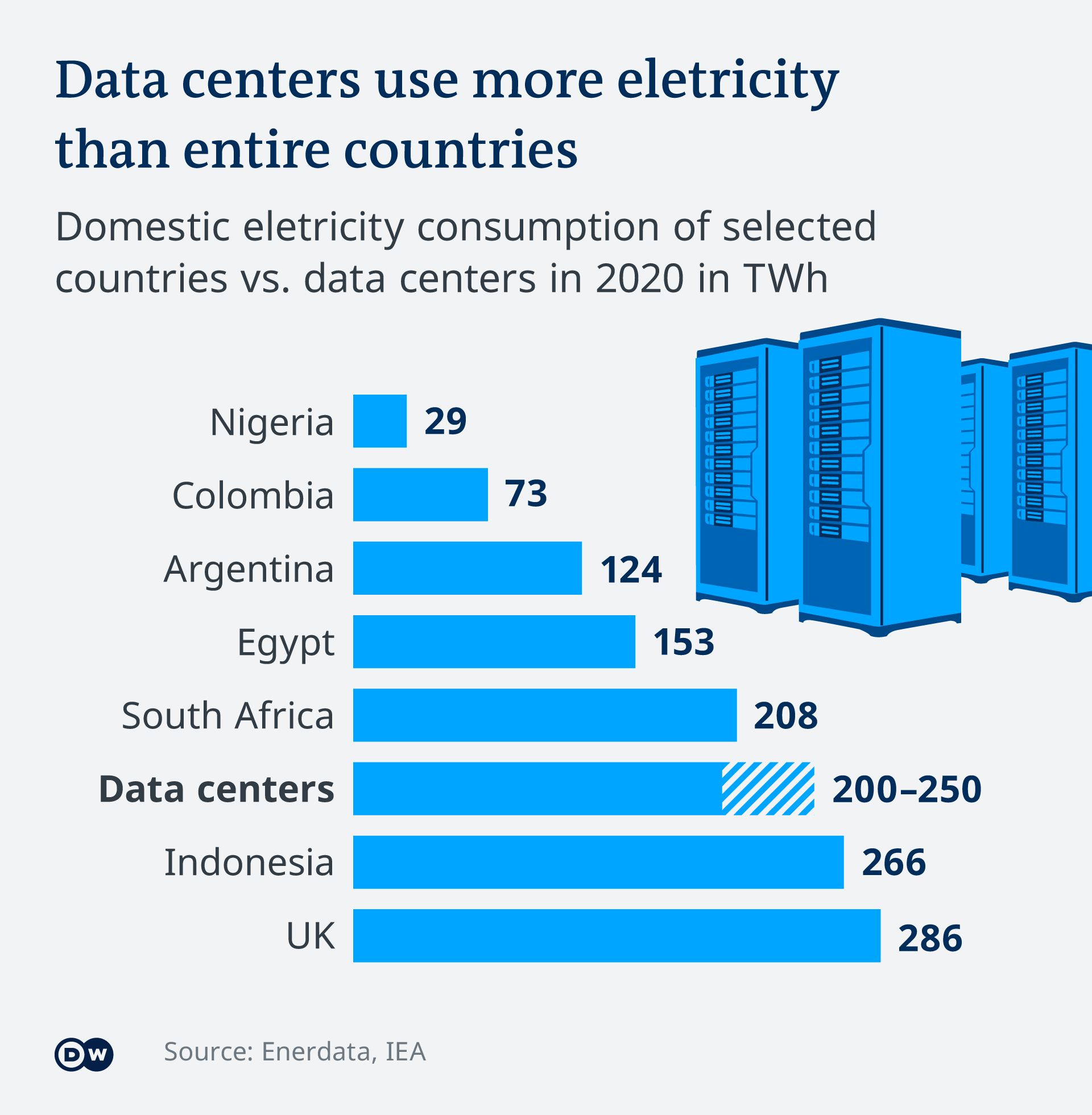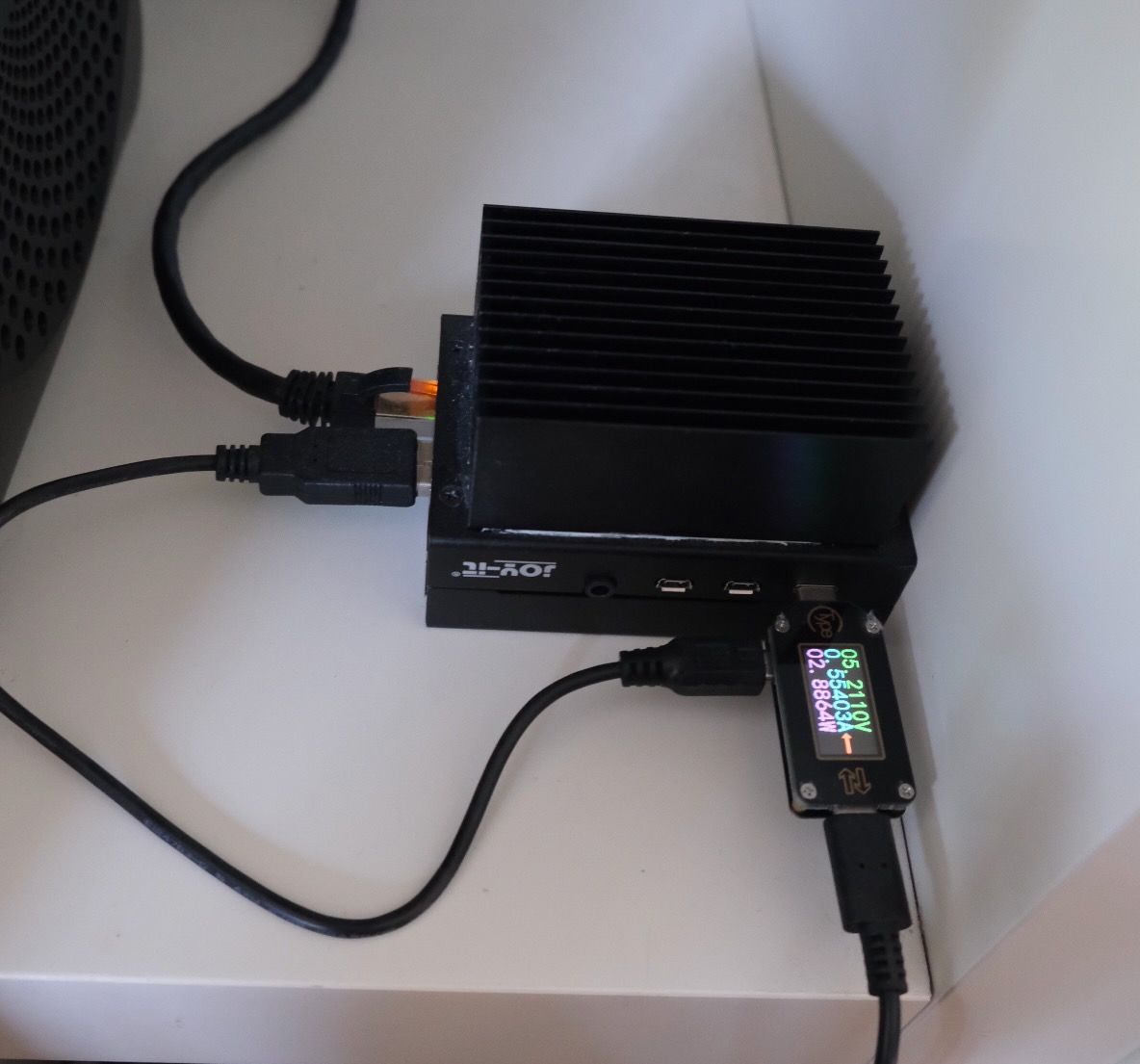
Wait, watt?
Written by Roman on July 18, 2023
Maybe you've wondered what this little number at the top of our homepage means. It's actually the current energy consumption of the server hosting this very website. But how? And why? And why should I care, you might ask? Let us try to explain all of that in the upcoming sections.
Why should I care?
The internet and the technology surrounding it is already one of the largest consumers of electricity worldwide. It is estimated that today's data centers (the facilities that store and manage computer systems) consume power equivalent to countries like South Africa or Indonesia. The current hype around AI and training corresponding models will further increase energy consumption, despite the hardware becoming more energy-efficient. While some data centers strive to use "green" energy, others do not. Consequently, some researchers estimate that the energy consumption of the internet is comparable to other major CO2-emitting industries like air travel.

So what does this have to do with your website?
We have always been curious about technology and its implications in the real world. However, the energy consumption of webservers is still something quite abstract, even for nerds like us. Therefore, we contemplated different ways to make internet energy consumption more tangible. What better way to achieve that than to display the real-time power consumption of our own website? Feel free to play with it. Open a second browser window and refresh the website a few times, and you will see the energy usage increase. Fascinating, right?
But how?
The hosting infrastructure of modern websites makes it impossible to track the energy consumption of a single website. Instead of physical servers, you now rent virtual capacities encapsulated in self-scaling virtual environments within data centers spread across continents. To address this challenge, we host our website on a Raspberry Pi, a small computer/server with comparatively low energy usage, located in our living room. You can find an image of it here:

To measure its energy consumption, we've connected a TC66C USB-C Volt-/Amperemeter to the Raspberry Pi and read its measurements using a Python library. The measurements are then transmitted via websockets and received through JavaScript on the frontend. To reduce the site's energy consumption, it is server-side rendered and then delivered via an NGINX webserver. If you're interested in the nitty-gritty details, write us a message, and we will show you our implementation and code! :)
Bigger picture - do you care?
While our little project helps us understand the energy consumption of the daily dose of internet we consume, we must remember that webservers and data centers are only small parts of the energy-hungry infrastructure that powers the internet. Millions of routers, buildings, sea cables, and more are needed to deliver the internet to your socket outlet. From there, your private router, computer, smartphone, screen, TV, and other devices continue to consume energy. Nevertheless, we hope that the animated number at the top of our website makes you pause for a second and consider that every webpage you visit somewhere triggers a computer to consume a little more energy.
Sources
- https://www.dw.com/en/data-centers-energy-consumption-steady-despite-big-growth-because-of-increasing-efficiency/a-60444548
- https://penntoday.upenn.edu/news/hidden-costs-ai-impending-energy-and-resource-strain
- https://www.bloomberg.com/news/articles/2023-03-09/how-much-energy-do-ai-and-chatgpt-use-no-one-knows-for-sure#xj4y7vzkg
- https://business.brack.ch/de/product/1432558
